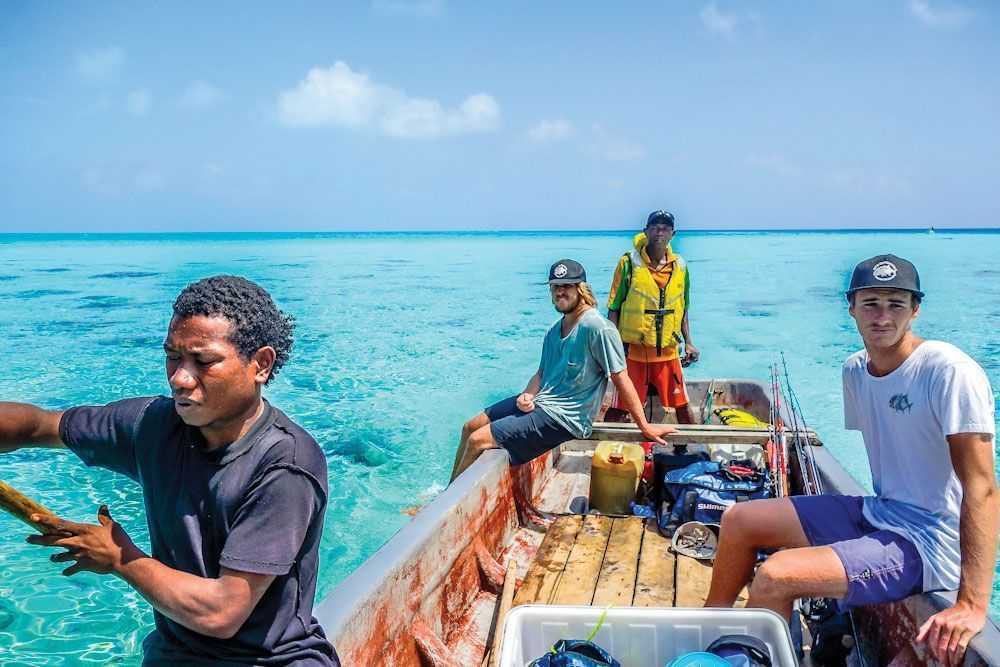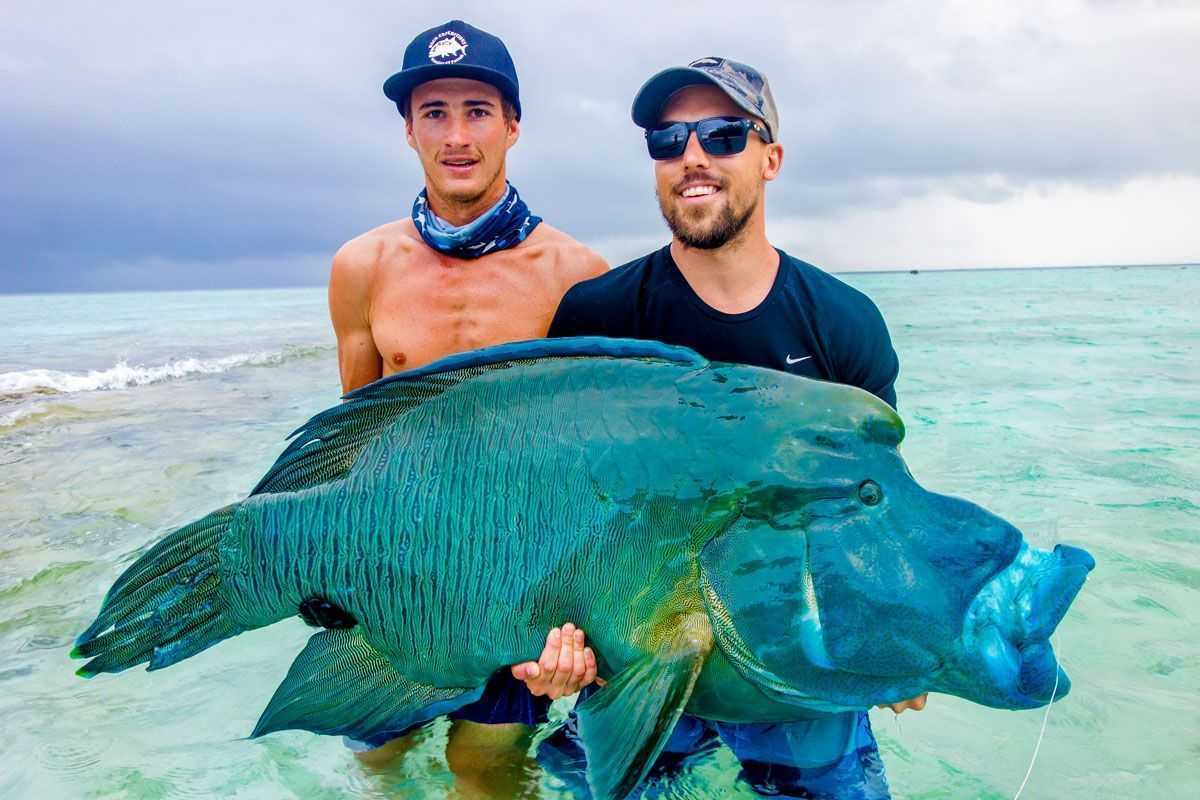By: Kurt Kiggins
When it comes to fishing the South Pacific, there’s a whole lot out there about Australia. What you don’t hear a lot about is the Pacific Ring of Fire, where volcanic activity has thrown up a string of islands and underwater topography that makes for spectacular opportunities to catch fish, and lots of them, including species many in the Western Hemisphere have never even heard of.
For the last two years, I have traveled to Papua New Guinea (PNG), a country that makes up the eastern half of the island of New Guinea to the north of Australia. On the first trip, in November of last year, the main target was giant trevally, a strong and ferocious member of the jack family found in the Indo-Pacific. It was awesome, but unfortunately upon returning this year on our second trip, we found giant trevally were out of season. That didn’t stop us from encountering loads upon loads of monster dogtooth tuna, and an unbelievable number of fish were caught.
Surprisingly, I found myself experiencing some of the most insane land-based action I have ever witnessed, although this was due to putting hours of effort into perfecting the techniques. This time around, I felt pressure because I had convinced my best mate to tag along, promising him the money would be well spent and he would never be able to forget this time on the golden sand and in the deep clear seas.
With Luke “Rock” Wrysta as a guide, I had no doubt our plan to meet with the anglers from all over the world (Japan, America and England) would go off without a hitch. We first landed in Cairns, Australia, before making the hop north to Port Moresby, the capital city of PNG, to spend the night before traveling to the tiny island of Missima. Rock and I were the only two to get on board the tiny aircraft to fly to the small islands and really enjoy the last luxuries we would be enjoying for a few weeks. I guess the rest of the boys mistakenly expected there to be refrigeration and flushing toilets.
When the eight of us arrived at our first camp, Rock divided us among the four dugout boats we would fish from. The next morning, after a hearty breakfast of beans and island fruit, the local boat drivers were in no hurry to get on the water, unlike myself. When the boats were ready to go, I was the first to claim a vessel for Tom and myself for the adventure. To be honest with you, I don’t even remember what fish we even caught in those first few days, and my brand-new camera fell victim to the beautiful waters of the remote islands.
On the fourth morning, I woke up restless and decided to try my luck from the shore. As I observed my mates from the encampment stumble out of their sleeping bags and stagger toward the local-made breakfast bar, I snuck off with my casting rod, and a 122 mm (about 5 inches) popper. Trekking off toward the sunrise, the emptiness in my stomach filled with that unmistakable feeling of anticipation. I found a promising-looking pinnacle that protruded from the island into the clear, warm water. Tying the popper on the leader, I took a moment to admire the magnificence. The vast cobalt ocean seemed to melt off and mix in with the colors of the sunrise.
The first few casts of the popper saw inquiries from bluefin trevally, red bass and a reef shark. Continuing to gently pull the popper toward myself, I began to drift off into a hunger-induced daze. That’s when a deathly sucking noise pulled me back into reality. I watched an amazing dorsal fin take off with my lure for the cover of the coral cove. Unaware of what kind of fish could make such a fuss, I loosened the drag on my reel. I did not want to lose this creature due to the hooks bending out. When the fish realized what was happening, it began to fight for its life, weaving in and out of the sharp coral bommies (reef heads). My reel screamed as the beast ripped 100-pound braid off my Shimano Stella 18000.
I coaxed in what turned out to be a humphead wrasse by running from bommie to bommie, stumbling on the jagged coral in bare feet. The coral cuts that were left didn’t seem to affect my euphoria as I wrapped my arms around the fish’s back, supporting its belly, before it started to swim off again. My heart sank. I lightly grabbed the leader one last time, remembering to be so careful because of the hooks and the 2/0 split rings. I made the rash decision to drop my $2,000-plus setup into the salty water so I could grab the fish, which meant a lot more than money to me.
The humphead wrasse is a gorgeous fish that can weigh into the hundreds of pounds. It is also an endangered species, so there was nothing else for me to do with the fish but sit, wait and care for it. There was no question about it, I had to get a photo with this insanely beautiful fish, but there was no one with me to take the photo. I continually pushed water into the fish’s gills, hoping someone would come to find me. I was already late for the boat, and the timing was impeccable as Tom and Rock came out of the thick forest.
After swimming the fish for several minutes, it began to kick its colored tail, and I could feel the incredible power of the fish. It swam off into the deep blue ocean, possibly never to be caught or seen by another human’s eyes.
[easy-social-share]


